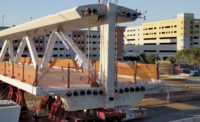The impression that no major transportation projects had been built on a design-build basis would be wrong, however. The new Tacoma Narrows bridge, opened in 2007, and other projects were built using design-build as a project delivery method.
Clarity is a Key
Advocates of design-build construction have stressed clarity as a key to success.
"They went with design-build for all the right reasons," says ">Robynne Parkinson, a Seattle-based construction attorney who is associated with the Design-Build Institute of America and has spoken and written extensively on the subject. "But when you try to do hybrid projects it's absolutely vital that everyone know where the parties are, who is responsible for what drawings."
With requests for information apparently "coming fast and furious," says Parkinson, who reviewed the internal report, "nobody looked at why this was a change and recorded it. It should have been a change order. It didn't get reviewed through proper channels in WSDOT and incorporated back into the contract."
Even changes that have no impact on cost should be reflected in changes to the contract, she suggests.
In 2007, state lawmakers, concerned about the current bridge's ability to withstand an earthquake, passed legislation stating that "time was of the essence" in replacing the bridge. Former Gov. Christine Gregoire (D) announced in March 2008 that the new bridge needed to be complete in 2014.
In May 2009, WSDOT engineering leaders and staff decided to use design-build to meet an ambitious schedule. When the project request-for-proposal was issued in August 2009, the agency's bridge and structures office had completed about 70% to 80% of the design documents.
Although WSDOT was to serve as Engineer-of-Record and provide Kiewit-General with substantially complete drawings, the design for the pontoons in the request-for-proposals (RFP) only reflected "minimum technical requirements," the meaning of which was never defined, the report states.
The term "has become a source of disagreement" among the various state offices involved. The initial pontoon drawings were not stamped and signed until 18 months after the RFP was issued, says the internal report.







